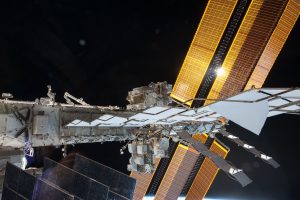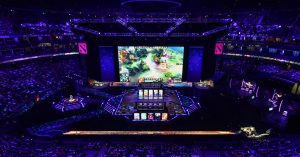Drew Stewart got the call at around 2 am: They broke the universe again, you should check it out.
So Stewart did something he’s done countless times before; he has no idea how many. He turned on Star Wars. But this time was different—literally. The galaxy had changed, like a glitch in the Matrix (if you’ll allow a mixed cinematic metaphor). And it wasn’t the first time.
As the person behind a Twitter account called Star Wars Visual Comparison, Stewart is a kind of unofficial keeper of apocrypha, of the sometimes subtle, sometimes extraordinary changes wrought by their makers upon three Star Wars movies: A New Hope, The Empire Strikes Back, and The Return of the Jedi. These alterations to the canon are the stuff of many nerd debates, and Stewart has followed them closely. That’s why, at 2:50 am on the day Disney+ launched with the whole Star Wars catalog in 4K resolution (pretty!), he found himself watching A New Hope yet again. What he found was yet another wrinkle: an all-new, all-different shootout between Han Solo and the lizardish bounty hunter Greedo.
Having just spent a week on the changes made to this scene since 1977—when, originally, Han kills Greedo in cold blood in the Mos Eisley cantina—Stewart knew he was seeing something extraordinary. He took to Twitter with word of his findings, and you can hear the existential despair in his voice: “Oh my god. This is not a joke.”
So what’s going on here? Well, the first Star Wars movie came out in 1977. And then things went kind of joojoofloopy. In 1981 Lucasfilm added the title “A New Hope” to the opening crawl, signaling that Star Wars is a genus, not a species. Recreating that crawl necessitated a new starfield behind it, so the giant spacecraft you see in the opening scene had to be recomposited. OK. Then, in 1997, the “special editions” came out with all sorts of new visual effects—new X-wings and a digital Jabba the Hutt in A New Hope, expanding shockwave rings around explosions, stuff like that. And, maybe most controversially, Greedo gets a shot off before Han. “It lasts like 20 frames or something. Greedo shoots, and Han just kind of sits there and then fires back eventually. Twice? He shoots twice. I don’t know how they animated that and got it through quality control,” Stewart says.
“Then we have the DVD version, which came out in 2004, and it had a myriad of changes,” Stewart says—including retiming the shootout. “And then the Blu-rays came out in 2011, and there were more things.” Like, for example, they cut the pause altogether.
And the version that’s on Disney+ now? “It’s a whole new thing. I just don’t understand,” Stewart says. “The insert shot of Greedo? That’s just the shot of Greedo from a few seconds before, but zoomed in poorly. Then he says a nonsense word, and then they shoot at the same time. And he explodes.” That nonsense word doesn’t even get translated in the subtitles. It’s something like “maklunky,” and it launched memes, as things do now.
As a nerd, even I’ll allow this seems like small beer, in a way. Star Wars’ creator George Lucas tinkered on his stuff for decades before Disney bought his company, nominally locking the prints. One more change shouldn’t come as a huge surprise, especially since, as a Lucasfilm spokesperson confirmed, Lucas himself made the changes to the Han/Greedo scene after the Blu-ray release in 2011 and before the Disney acquisition in 2012. For fans, though, it’s something that makes the movie one more step removed from what hit theaters 42 years ago.
Put another way, the Disney+ version of Star Wars means the canon now includes 1977’s A New Hope, and its 1981 revise, 1980’s Empire, and 1983’s Jedi. The 1997 special editions, on film and in 2K resolution. The 2004 special editions on DVD, from a 1080p master. The 2011 special editions, again in 1080p, for Blu-ray. And now … this. Which is what, exactly?
Stewart went back to his computer and his TV screen and did a rewatch, and he has some concerns. After we spoke, he DM’d me to say that he thought the Disney+ versions had too many color corrections to merely be a Greedo-tweaked, uprezzed 2011 Blu-ray version. “According to anonymous sources, this is what Lucas worked on after the Blu-ray, a 4K cut with all these changes,” Stewart says—an all-new edition made from the original negatives of the 1997 special edition. “It’s not a revision,” he wrote. “It’s a whole new fork.”
A Lucasfilm representative sort of denied this. “The 4K are from the Blu-ray releases,” the person said.
So I asked—just to make sure, then, Stewart’s guess is wrong? It’s not a new fork, the Disney+ movies are revisions of the 2011 releases and not entirely new versions made from the 1997 special edition negatives, with re-done visual effects? No response.
This isn’t the only weird choice Disney+ made. At the same time as the Greedo thing was unfolding, Simpsons fans were gnashing their terrible teeth and roaring their terrible roars about the decision to show early-days episodes cropped to fit new, high-definition screens instead of presenting them in their original 4:3 standard-def aspect ratio. You lose a lot of visual jokes that way, like (perhaps most famously) learning on a widening shot that the three kinds of Duff beer (Duff, Duff Lite, and Duff Dry) all come from the same pipe. The originals are readily available, unlike the earlier rounds of Star Wars revs; FXX showed them. The 4:3 eps just … aren’t there.
But why? Why not just load everything onto the servers and let subscribers choose, as a reward for paying to be part of the broader Disney ecosystem? Matthew Ball, a media analyst who has written a lot about Disney+, tells me he suspects it was probably a technical issue more than a content choice.
For Star Wars, though, it’s a significant one. Star Wars has a rigidly enforced canon; the movies are its backbone. So different versions of the movies on people’s shelves present a problem for the hegemony. Like the various translations and apocrypha that Christianity has had to declare, at various moments across millennia, in or out, differing movie versions offer different gospel truths. If Han Solo murdered Greedo, then his decision to return at the climactic moment of A New Hope to help the Rebellion represents an epiphanic change in character. If Han killed Greedo in self-defense, he was always a good person hiding his emotions. (Han manifestly shoots first in the prequel Solo.)
Having multiple iterations of that gunfight—it’s like having multiple stories about what happened to Paul on the road to Damascus. Someday, a long time from now, in a castle far, far away, someone is going to have to excavate Dave Stewart’s Twitter feed and make some hard decisions about canon, and what’s apocrypha now.
More Great WIRED Stories
- Pompeo was riding high—until the Ukraine mess exploded
- 13 smart STEM toys for the techie kids in your life
- The Icelandic facility where bitcoin is mined
- Inside Apple’s high-flying bid to become a streaming giant
- The untold story of Olympic Destroyer, the most deceptive hack in history
- 👁 A safer way to protect your data; plus, check out the latest news on AI
- 🎧 Things not sounding right? Check out our favorite wireless headphones, soundbars, and Bluetooth speakers



